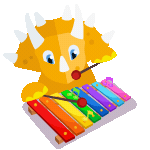Exploring Ireland with Kids: Beautiful Places and Local Wonders
Ireland may be small in size, but it’s packed with beauty, charm, and plenty of places that kids will love to explore. From lively cities to peaceful coastlines, there’s something for every family.
Discovering Dublin: A Coastal Capital Full of Surprises
Dublin is the largest city in Ireland and a perfect place to start your adventure. Located by the sea, it offers coastal views and friendly neighborhoods. Kids will enjoy walking along cobblestone streets, spotting statues, and visiting historic churches.
The city center, especially around O’Connell Street and the River Liffey, is full of fun shops, cafes, and music. Right in the middle of Dublin, you’ll see the Spire—an impressive, shiny tower reaching into the sky.
For families who want a break from city life, Phoenix Park is a must-visit. This is one of the largest walled parks in Europe and is home to wild deer, gardens, walking paths, and even a zoo!
County Donegal: Remote Beauty and Wild Coastlines
For something very different, travel to the northwest and visit County Donegal. This area is more rugged and quiet than Dublin. It’s full of rocky coastlines, tall grasses, and misty beaches. In some parts of Donegal, people speak Irish as their first language.
One of the most beautiful sights here is Mt. Errigal, the tallest mountain in the county. It’s a great spot for hiking and enjoying nature as a family. Kids will also love exploring the wild beaches and seeing old shipwrecks washed up on shore.
Tasting the Flavors of Cork
Down in southern Ireland, County Cork is a fun place for families. The city of Cork has the English Market, where you can find fresh fruits, pastries, cheeses, and tasty meals from around the world. It’s a great spot to explore smells and flavors while walking through colorful market stalls.
Just a short trip from Cork is Killarney, known for traditional Irish music and its beautiful national park. Killarney National Park has lush greenery, lakes, and even Ross Castle—a real stone castle by the water that looks like it’s from a fairy tale.
The Real Treasure: The People of Ireland
While castles and mountains are amazing, many visitors say the best part of Ireland is its people. In the small towns across the countryside, locals are friendly and always ready for a chat. Taking the time to visit these places lets kids and families learn about real Irish life and culture.
Irish Alphabet and Language
Although most people in Ireland speak English today, Irish (also called Gaelic) is the original language. Irish has only 18 letters, and each vowel has a special version with an accent. These accents change the way the letters sound.
Vowels: a (bat), e (set), i (sit), o (son), u (book), á (far), é (say), í (me), ó (more), ú (who)
Consonants: b (bat), c (cat), d (dude or jude), f (fox), g (good), l (leg), m (man), n (nun), p (pinch), r (roll), s (soap or shade), t (time or chime)
Some combinations, like “ch,” make unique sounds not found in English. Irish doesn’t include letters like q or v, and the way words are pronounced is often very different from how they’re spelled!
Traditional Irish Music: Alive with Rhythm and Stories
Irish traditional music is a vibrant part of the country’s culture. It includes lively jigs, emotional ballads, and unique instruments like the uilleann pipes, a cousin of the Scottish bagpipes. Unlike the Scottish version that you blow into, uilleann pipes are powered by an arm pump. In Irish, they’re called píobaí uilleann, or “pipes of the elbow.”
Other traditional instruments include the Celtic harp (cláirseach), tin whistle, bodhrán (drum), fiddle, and the banjo (which was added in the 1920s). Many early tunes were created for dance and storytelling—honoring heroes, telling family stories, or expressing sorrow through laments.
Irish music is known for bringing people together. Whether at a family home, a local pub, or a big concert, it’s common for people to sing, dance, and play music together. Even today, many homes still have a tin whistle tucked into a drawer, ready for music!
Thanks to global musicians and festivals, Irish music is now famous around the world. But its heart still beats strongest in the cozy gatherings of local families and communities.
Classic Irish Children’s Songs
Here are two traditional Irish songs that kids often learn and sing:
Báidín Fheilimí A fun song about Feilimí’s little boat and its adventures to Gola and Tory Islands. It’s simple and catchy—perfect for singing along!
Seoithín Seó A gentle lullaby that talks about fairies and dreams. This song shows how magical and poetic Irish storytelling can be.
Learn More About Ireland with Dinolingo
To bring Ireland into your home, kids can start learning Irish with fun lessons on Dinolingo. With songs, games, videos, stories, and worksheets, Dinolingo helps children learn languages through playful and effective activities. Whether your child is learning Irish before a trip or just for fun, Dinolingo offers a full experience on web, iOS, and Android.
With one subscription for up to 6 users, offline options, and over 50 language choices, it’s perfect for families.
Conclusion: A Country Full of Wonder
From Dublin’s cozy streets to Donegal’s dramatic coasts, and from Cork’s delicious market to the peaceful parks of Killarney, Ireland is full of places to explore with your child. More than anything, the kindness of the Irish people and their rich culture make every visit unforgettable.
Encourage your child to learn about Irish culture, try a few Irish words, enjoy traditional music, and start the adventure—whether in person or through online learning.
Start Learning a New Language Today!
Best Language App for Kids.
7-day free trial. Then only $19/month. Cancel anytime.
